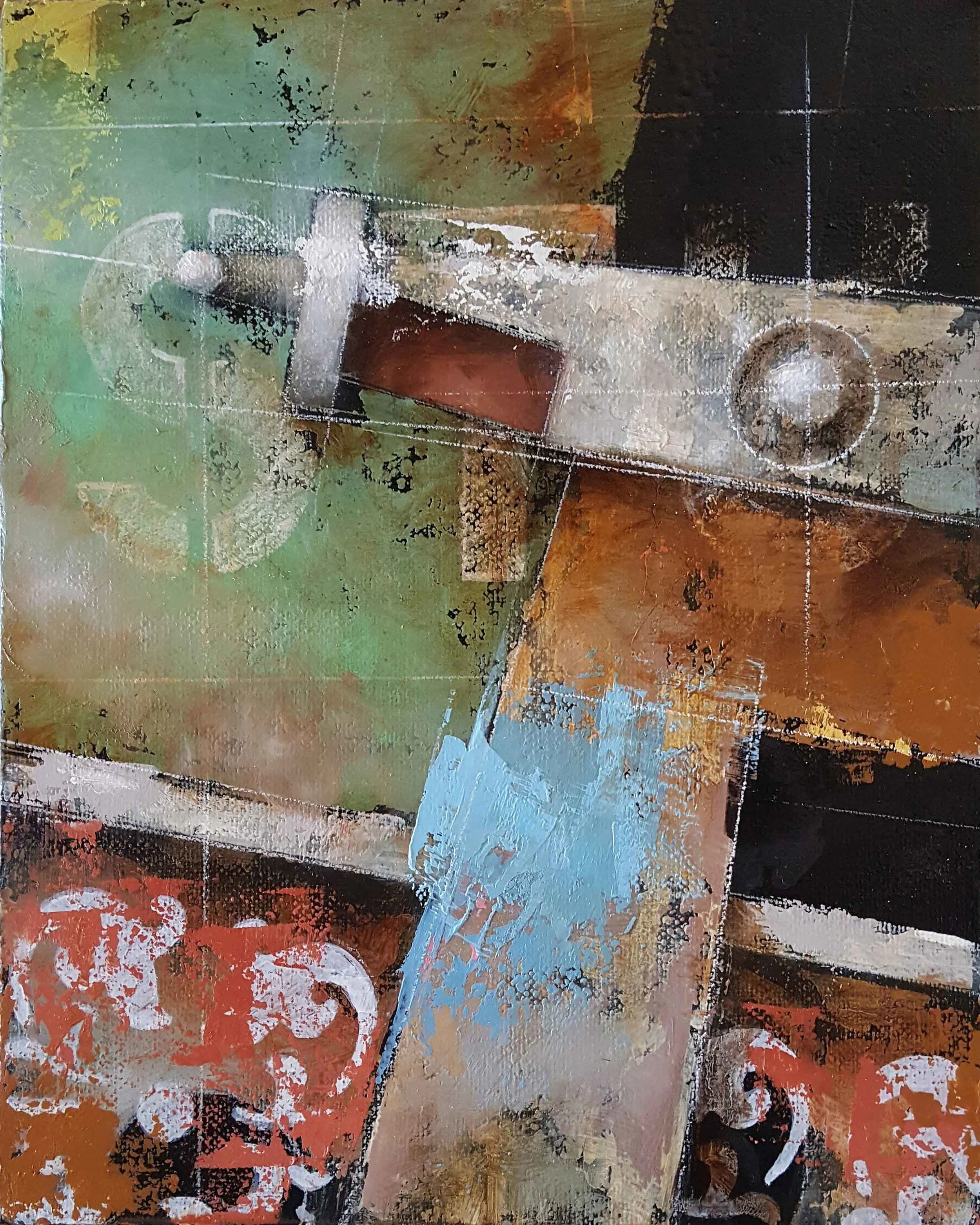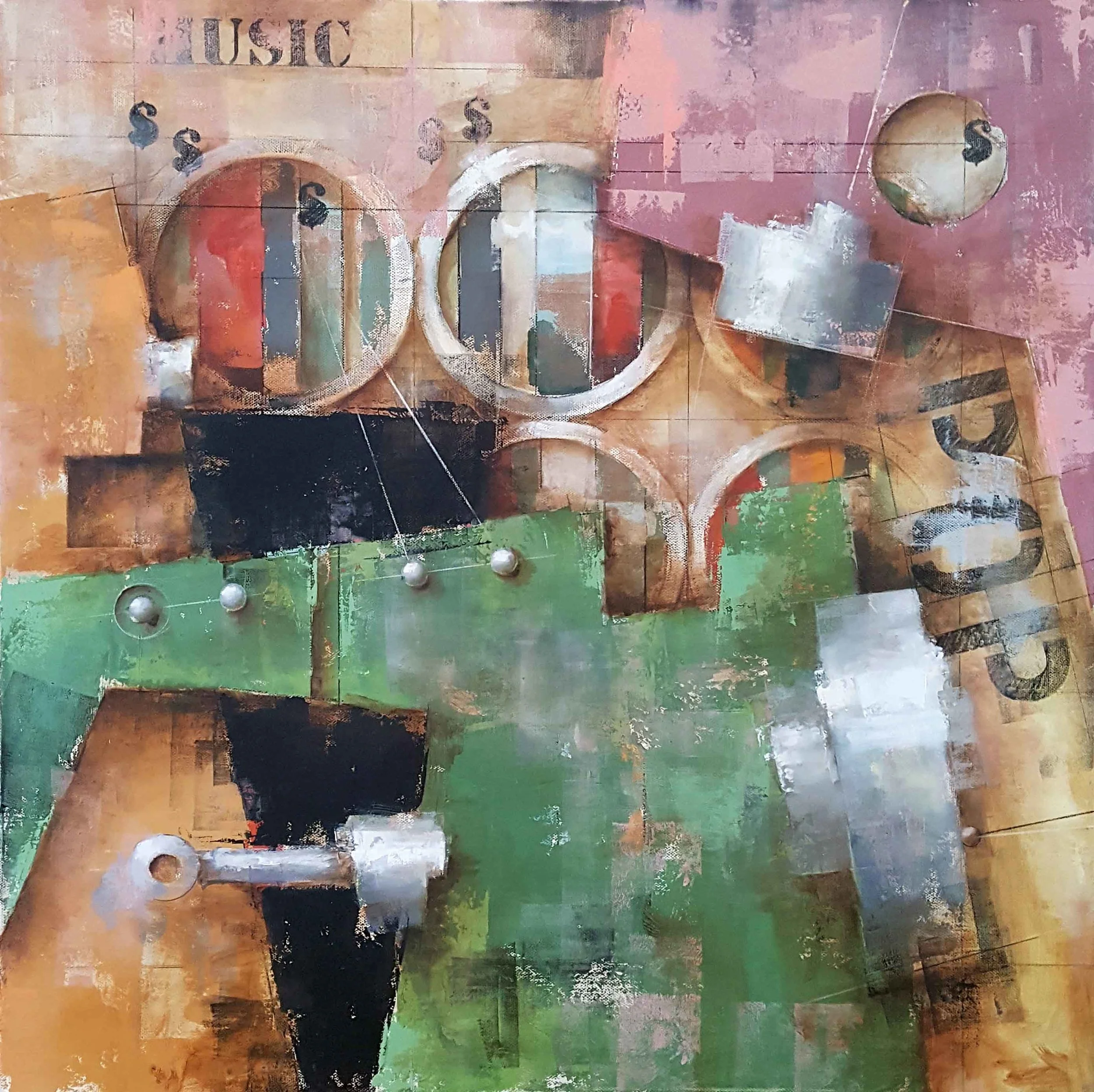Helen Keller was the first deaf and blind person to earn a Bachelor of Arts degree. Think about that for a second. Could you imagine what affect blindness would have on a painter? How about a sculptor? Artists sometimes get wrapped up in larger "stuff" regarding gallery representation, awards, recognition, achievement, acknowledgement, etc. but often lose sight (no pun intended) of how lucky they are to see and sometimes hear the creation of their own work.
Artists often talk about their work but the act of painting, sculpting (making their 'mark') is a more truthful manifestation of the hope and confidence they have in themselves and the world around them. Nothing expresses the hope and confidence an artist has in themselves as crafting their work year after year and the subsequent growth and development that is a reward for their diligence. I've heard many a time about the 'mistakes' that an artist makes but those mishaps are keys to creating confidence since it is overcoming those obstacles that is the very foundation necessary for achievement. Success is a byproduct of failure.
I am a self-taught, Outsider artist who started painting after meeting Robert Rauschenberg in late 1989 at a book signing taking place at his NY studio. The book was Kiki's Paris and was written by Billy Kluver and Julie Martin. What struck me most while I was walking around Rauschenberg's studio looking at the work he had on his walls was that this was an artist who had supreme confidence in himself and was clearly able to make a living doing his artwork. That was an epiphany for me. I was always told that I had to get a 'real' job by my parents, teachers, etc. If that was the case then how do you explain what Robert Raushenberg was doing both in art and life?
When I first started painting I didn't have enough money to take a class so I read how-to books on painting and painting techniques. I read The Artist's Handbook by Ralph Mayer as well as a host of other books including artist biographies which described in greater depth the overall environment in which the artist worked (This is where Kiki's Paris was an instrumental introduction since it was a glimpse into the life of the artists). I identified with many of the artists and artist biographies including that of Georges Braque who is my favorite artist. To me his work with Cubism, along with that of Picasso, ushered in a new world of 'seeing' that took the visible world and transformed it into an architectonic intellectualism that made it possible for the viewer to see more than the object itself. I was hooked!
So I painted ... a lot ... and started to learn the properties of the oil painting medium. I was free to explore, make mistakes, have fun, etc. Braque and Picasso opened up a world that I didn't know existed and with the inspiration from my chance meeting with Robert Rauschenberg (who in many ways to me is Cubism 2.0) I was ready to go. And although at the time I lacked the skill and proficiency to paint I had faith that it was something I could learn and I was optimistic that I would find my way in creating my own work.
Tip of the Trade
- In building the layers of an oil painting it is essential to build your painting using lean layers first. One method I like to use is to work with black, white and grey gesso over a black primed canvas or panel to build the composition. The tinted gesso underpainting gives me a very lean grisaille to add fatter paint layers and colors.
Interested in subscribing to my email list?




